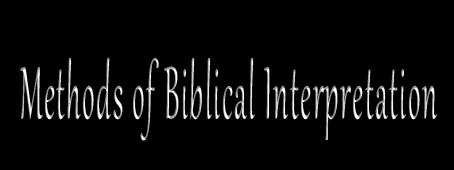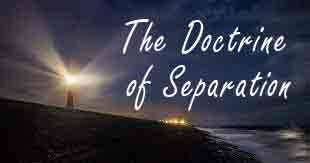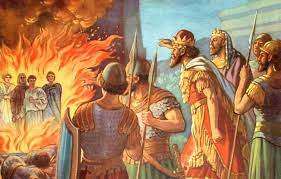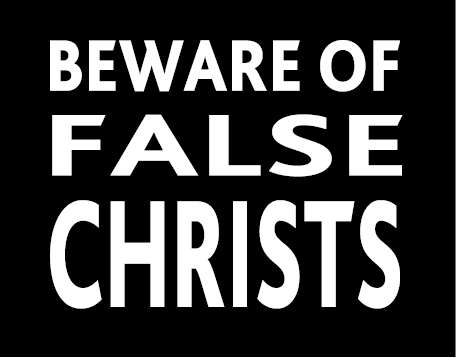

The Methods of Biblical Interpretation-A Brief Study
Dr. Saju Joseph
The interpretation of scripture must constantly keep in clear focus the basic objective of interpretation: discovering the meaning intended by the author when he wrote. Through the centuries the interpreters of the scripture have developed various methods of interpretations. As they were developed they became comprehensive systems of interpretation, each possessing its own set of rules. As methods, they each include their own distinctive group of principles. Some of prominent methods will now be briefly defined and evaluated.
1 THE ALLEGORICAL METHOD
The allegorical method presumes that beneath the plain and obvious sense of scripture lays its true meaning. It believes that what the words of scripture literally say are only external “chaff” which hides the true spiritual “wheat” of the word. In this method, a passage with obvious literal meaning is interpreted using a point by point comparison which brings out a hidden spiritual meaning not evident in the plain language of the passages. This method has been applied to the whole of scripture by allegorists both ancient and modern. An example: Pope Gregory the great interprets the book of job; “The Patriarch’s three friends denoted the heretics; His seven sons are the twelve apostles: His seven thousand sheep are God’s faithful people; and the three thousands hump-backed camels are depraved Gentiles”
Centuries have proven that the allegorical method to be quite inadequate in the interpretation of Scripture. The error of this method begins at its foundational assumption: that what God said in plain language is not really what He meant.
It is a dangerous method in that there are no Scriptural boundaries to guide its implementation. Undoubtedly, this is the reason for the great variety of contradictory theological position among allegorists. Through the allegorical method scripture is interpreted apart from its grammatical –historical meaning. What the author was trying to communicate plainly is almost totally ignored and what the interpreter desires to say is forced upon it. Allegories obscure both the literal and figurative elements in scripture. But exalting the interpreter’s intention and ignoring the author’s intended meaning, the allegorical method fails to reach the basic goal of interpretation and must be discarded.
Extreme typology borders on this method. However, it must be recognized that these two are not synonymous. The difference is that typology is the search for linkages between events persons or things within the historical frame work of revelation, whereas allegoric method is the search for secondary and hidden meaning underlying the primary and obvious meaning of a narrative. The interpreter must also be careful not to confuse the practice of allegoric method with the figure of speech called allegory.
2. THE MYSTICAL METHOD
According to this method there lies a multiplicity of meaning hidden beneath the surface of the words and their plain sense. It goes beyond the allegorical method by opening the door to a wide variety of interpretations. Using the mystical method, a passage of scripture with obvious literal meaning is interpreted to have a number of exalted spiritual meanings. Because of the professed desire to reach beyond the letter in to the spirit of the word, the function of this method has also been called “spiritualization”.
For example when Exodus 20:13 is interpreted, “Thou shall not kill” many different meanings can be applied. In applying a three- fold sense of scripture to this commandment firstly, its natural senses is that murder, hatred and revenge are forbidden; its spiritual sense can be that “to act the devil and destroy a man’s soul” is forbidden: and its heavenly sense can be that for the angels, hating the Lord and His word is as murder!
History has proven the mystical method to be misleading and of little value in the interpreting of scripture. The error in its foundational assumption goes beyond that of the allegorical method in that it presumes that scripture may have any number of meanings. In other words, in authoring scripture, God meant many things other than those he actually said. The objection to this is that if God did not mean what he said, then how can the interpreter discover what he did mean? Instead of regarding scripture as a sensible communication from God, mystics turn it in to a riddle and make it say almost anything other than what God meant for it to say. Differing from those who use allegorical method, who tend to follow some system of comparison, those using this method are more erratic, not bound by any law.
They each became a law of interpretation to themselves, By exalting the interpreter’s intentions and ignoring the author’s intended meaning, the mystical method fails to reach the basic goal of interpretation.
3. THE DEVOTIONAL METHOD
The devotional method believes that the Bible was written for the personal edification for every believer and that its personalized hidden meaning can only be revealed by the shining of a great inner spiritual light. 1 John 2:20 is often used as a proof-text for this. It searches the scripture to discover meaning that will build up the spiritual life. In interpretation , which is most important is not what God said to others, but what he saying to the interpreter. Thus to interpret the scriptures devotionally is to search beyond their plain obvious meaning for spiritual meaning applicable to the believer’s life. For an example of devotional interpretation, some well- meaning Christians have interpreted Mathew 10:9,10,19 to mean that in their evangelizing they should neither take any material provision nor make any spiritual preparation.
Time has proven the devotional method to be quite dangerous as a system of interpretation. The chief danger of this method is that is seeking to apply scripture personally the interpreter may ignore the plain literal sense of what God was saying to those in that particular historical setting, and thus apply scripture self-centrally. Moreover, devotional interpretation falls prey to allegoric method of excessive typology, and may become a substitute for the requisite exegetical and doctrinal studies of the Bible.
However, this does not rule out altogether the devotional, practical and edifying use of the scripture. Certainly this is a prominent part of the purpose of scripture, and the word of God is of no value to the believer unless it is applied to his life practically. The interpreter must recognize that scripture is meant to be applied devotionally, but that this can only be properly done after it has been interpreted literally and historically. Devotional interpretation must also be harmonized with doctrinal interpretation.
4. THE RATIONALISTIC METHOD
The rationalistic method presumes that the Bible is not authoritative inspirited word of God. It interprets scripture as a human document in the light of human reason. With the rationalist, “Nature is the standard, and reason is the guide.” If the Bible can be made to harmonize with the knowledge of the interpreter, then it is to be understood as meaning what it says; but if not, it is to be regarded as mythical, or used by way of accommodation. Thus a sort of educated modern mentality is used to judge and interpret scripture. As an example of rationalistic interpretation: to explain away the supernatural, Lazarus is said to have gone into a coma rather than having died, and Jesus is said to have only appeared to have walked on the water. The rationalists do not believe in the authority and veracity of scripture. They consider historical events such as the crossing of the Red Sea and the transfiguration of Christ as either fanciful exaggerations or contrived myths. This method is very dangerous.
Several generations have proven this method to be little more than the method of unbelief. In fact, rationalistic exegesis could be better termed “exit Jesus”. Though claiming the title “rational” ,this method is actually most irrational. It is virtually uninterested in what the writers literally said, but cares only for what the interpreter thinks they should have said. It exalts the God of reason above the authority of the word of God. By it the interpreter sets himself up as the standard of truth and only sees value in scripture as it confirms this conclusions. For the interpreter who views scripture as the inspired word of God, the rationalistic method in all its various forms must be totally rejected.
5. HISTORICAL-CRITICAL METHOD
The use of historical criticism and critical methods has dominated much of the Biblical research undertaken in the recent centuries. The practitioners of these methods have arrived at some interesting, surprising and astounding conclusions about the Biblical authors and what they wrote. Many of these conclusions pose a serious problem to conservative evangelical Christians who hold that the Bible is the fully inspired, authorative, inerrant word of God.
The basic assumption of this method is that the Bible is a historical book. It records the history of Israel, the life of Jesus of Nazareth and the history of the early church in the words of humans who were inspired by. Because the Bible is an historical work, it is subject to historical investigation and the results of historical research.
The overall purpose of historical-critical methods is to investigate what actually happened in the events described or alluded to. This method gives the following goals of historical investigation:
1. Present a body of facts that show what actually happened and why.
2. Illuminate the past, creating a comprehensive picture of a culture's own record of history.
3. Understand the significance of events and interpret them.
4. Understand motives as well as actions.
Many liberal theologians have used critical methods to show that the Bible is not historically accurate. They argue that the authors were primarily theologians not historians so the "Jesus of history" is nothing like the Jesus of the Bible. They hold the view that if there is a discrepancy between the Bible and other historical material, it is the Bible that is most probably in error. A Biblical account must be ‘proved’ historically accurate rather than accepted as so. But this skepticism is unwarranted since the Bible has shown itself time and again to be historically accurate. Therefore we must repudiate this method out rightly.
6. THE LITERAL METHOD
The literal method assumes that the words of scripture in their plain evident meaning are reliable; that God intended His revelation to be understood by all who believe; that the words of scripture communicate what God wants man to know; and that God based the communication of truth on the regular law governing written communication, thereby intending for it to be interpreted by those same laws. This is not to deny the Holy Spirit’s involvement in both the production and the interpretation of the Bible.
The expression “literal sense” may be defined as: the usual, customary, and socially accepted meaning conveyed by words or expressions in their particular contexts. It involves that which a particular word meant to the original writer and readers. It recognizes that a word may have different meanings in different contexts and thus must be interpreted in the light of its contextual usage. It contends that though a word may possibly have several meanings, in any one particular usage it generally will have but one intended meaning.
To interpret literally means to explain the original sense of the speaker or writer according to the normal, customary, and proper usages of words and language. This method is also called the Grammatical-Historical method because, in order to determine the normal and customary usages of Biblical language, the accepted rule of grammar and rhetoric must be considered and the historical and cultural aspects of Bible times must be taken into consideration.
This can be expanded in the following four areas:
1. The literal sense does not exclude the figurative. Some interpreters have used the term figurative in opposition to the term literal, as though the figurative meaning of words were opposed to their literal sense. However, in that figurative language is a part of normal communication, it also is encompassed by the literal system of interpretation. Thus the literal includes the figurative.
2. The literal method does not exclude the spiritual meaning. Some interpreters have used the term ‘spiritual’ in opposition to the term ‘literal’ as though the spiritual meaning of scripture is opposed to its literal meaning. Under the title of ‘the spiritual method’ some interpreters have spiritualized scripture to mean something other than what it says. The literal method, though rejecting spiritualization, does admit the spiritual substance and nature of the scriptures. The Bible is a spiritual book conveying spiritual truth and therefore must be spiritually interpreted. This can be done by accepting as sufficient the illuminated literal meaning of the words.
3. The literal interpretation excludes application. Some interpreters confuse interpretation with application. John Calvin said, “The Word of God is inexhaustible and applicable at all times, but there is a difference between explanation and application. Application must be consistent with explanation.” The task of literal interpretation is first to discern the meaning of God’s Word, and then, upon that basis, to apply it. A general rule of the literal method is: “There is one interpretation, but many applications.”
4. The literal method does not exclude depth of meaning. Some interpreters believe that the literal method greatly limits the believer in discovering the divine depths of truth latent in Scripture. Indeed, some definitions of this method do, but here it is defined to include depth of meaning within certain necessary limitations. In that God is the virtual Author of scripture, some truths there in are patent outward and obvious, while others are latent, inward and hidden. Historical events do have spiritual significance, and certain figures of speech such as types, symbols, and allegories, do have hidden meaning. However, this meaning is solidly based on the earthly sense of the words and necessitates that interpretation remain within the proper boundaries of truths plainly revealed in God’s word.
However, the literal method stands out among the rest as the only sound, safe and sensible approach to the interpretation of scripture. Each of the other method has been proven inadequate in that they Lack God-given and well defined boundaries. Let’s prayer fully follow the literal method and also incorporate the good elements in other methods which would never dilute the inspiration and authority of the Word of God.






















